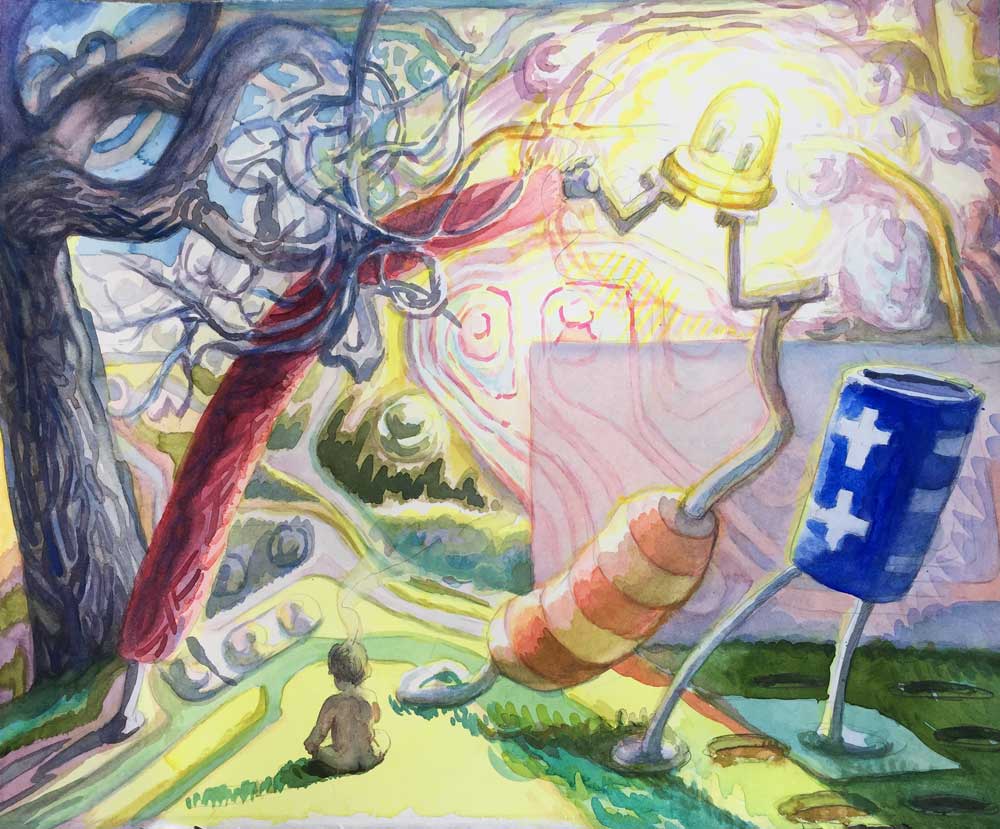The psychological development of a child raised by electronic devices, 2018.
Watercolor on paper, 15" x 18"
The children born into recent generations have an intimate relationship with machine intelligence. Technology is not a mere instrument of mankind -- it shapes our identity, and machine intelligence is influencing consciousness like never before. Computer-mitigated experience may be artificial, but it is no less "real" to the mind than natural phenomena. Computers have infiltrated the inner sanctum of human beingness. Arguably, our sanity is more vulnerable to Grid failure than our physical survival. As for whatever legacy endures beyond this fragile time in history, imagine the incredulity of future generations. Our stories will seem as far-fetched as flying saucers in the Hindu Vedas. What ordinary Earthling would believe that humans could encode intelligence on a silicon wafer the size of a flea, let alone sculpt the genome of living organisms?
What’s sad about this image is the replacement of ancient archetypes (the sun, for example) with archetypes that will not last (the light emitting diode, for example). Every generation and even civilizations are destined to die, but the archetypes have remained for thousands of years and united us with our ancestors. Our connection to this continuum of human meaning is profoundly comforting and is the basis of human identity (i.e., Joseph Campbell). When a civilization departs from natural, timeless archetypes and adopts symbols that depend upon man’s current technologies, then the loss is infinitely greater — our symbols will perish, and there will be a break in the story of human history.


